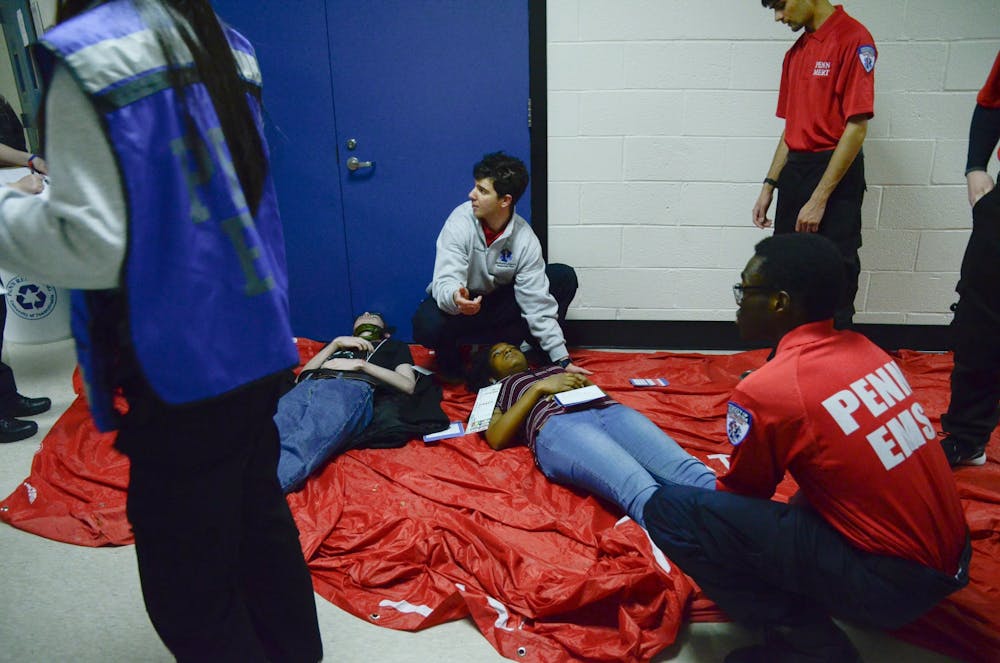Penn’s Medical Emergency Response Team received an increased number of calls in fall 2019.
MERT Chief and College junior Andrew Lam attributed the jump in number of calls to increased efforts to educate students about their services. He said MERT has increased programming with Greek life organizations and first-year students, particularly during New Student Orientation. The Division of Public Safety declined to provide exact numbers of MERT calls in recent semesters but confirmed last semester's increase.
Lam added that the rise in calls has not inhibited MERT’s ability to respond to medical emergencies. MERT currently has 46 emergency medical technicians on staff and has responded to over 5,000 calls since its founding in 2006. MERT responds to all medical emergencies within the Penn Patrol Zone between 43rd and 30th streets from Market to Baltimore streets and records an average response time of five minutes.
Wharton first-year Derek Nhieu said MERT's outreach efforts directed toward first-year students through NSO made him feel more confident that he could call for help after accidentally cutting his eye last November.
Lam added that he thinks the increased outreach has also reduced misconceptions students have about MERT, particularly that students must pay for its services.
“There used to be a myth that MERT costs upwards of $1,000," Lam said. "MERT is free. We’re all volunteers, but the myth comes from the ambulance transport."
Kathleen Shields Anderson, Division of Public Safety executive director of operations and chief of staff, also attributed the recent increase in calls to greater awareness of the University’s Medical Amnesty Policy in an email to The Daily Pennsylvanian. The policy states that “no student seeking medical treatment for an alcohol or other drug-related overdose will be subject to University discipline for the sole violation of using or possessing alcohol or drugs. This policy shall extend to another student seeking help for the intoxicated student.”
Anderson added that the increased awareness of the Alternative Response Unit may have also contributed to the rise in MERT calls.
RELATED:
Four new clinicians, three new sites, doubled hours — CAPS expands its Let's Talk program
Sixteen students transported to hospital for excessive drinking during NSO
Before September 2018, students who used MERT services and were then taken to the hospital by the Philadelphia Fire Department were billed $950 to $1170 to their insurance plans. Since then, Penn created the University-sponsored ARU which transports students suffering from medical emergencies to hospital for free. Lam said the program operates Wednesday night through Saturday night from 6 p.m. to 4 a.m., adding that most of MERT’s calls happen during that time period.
“We will continue to work with MERT and our Wellness partners to identify and respond to these trends,” Anderson said.
College junior and Undergraduate Assembly Treasurer Kevin Zhou said the ARU was not available when he first came to Penn in fall 2017, but since then, the UA has worked with MERT and the administration to eliminate hidden costs when receiving medical treatment.
Zhou said MERT discussed the recent increase in calls at the Feb. 23 UA budget meeting, which approved UA's contribution to MERT's budget for the 2020-2021 academic year. MERT's budget is also funded by the Division of Public Safety, Fox Leadership, and Student Health Service. The UA allocated $14,515 to MERT's 2020-2021 budget, a 2.98% increase from this year's $14,095.
“I think it’s better to have more calls than less calls,” Nhieu said. “The fact that students are less hesitant to call MERT is a good thing.”









